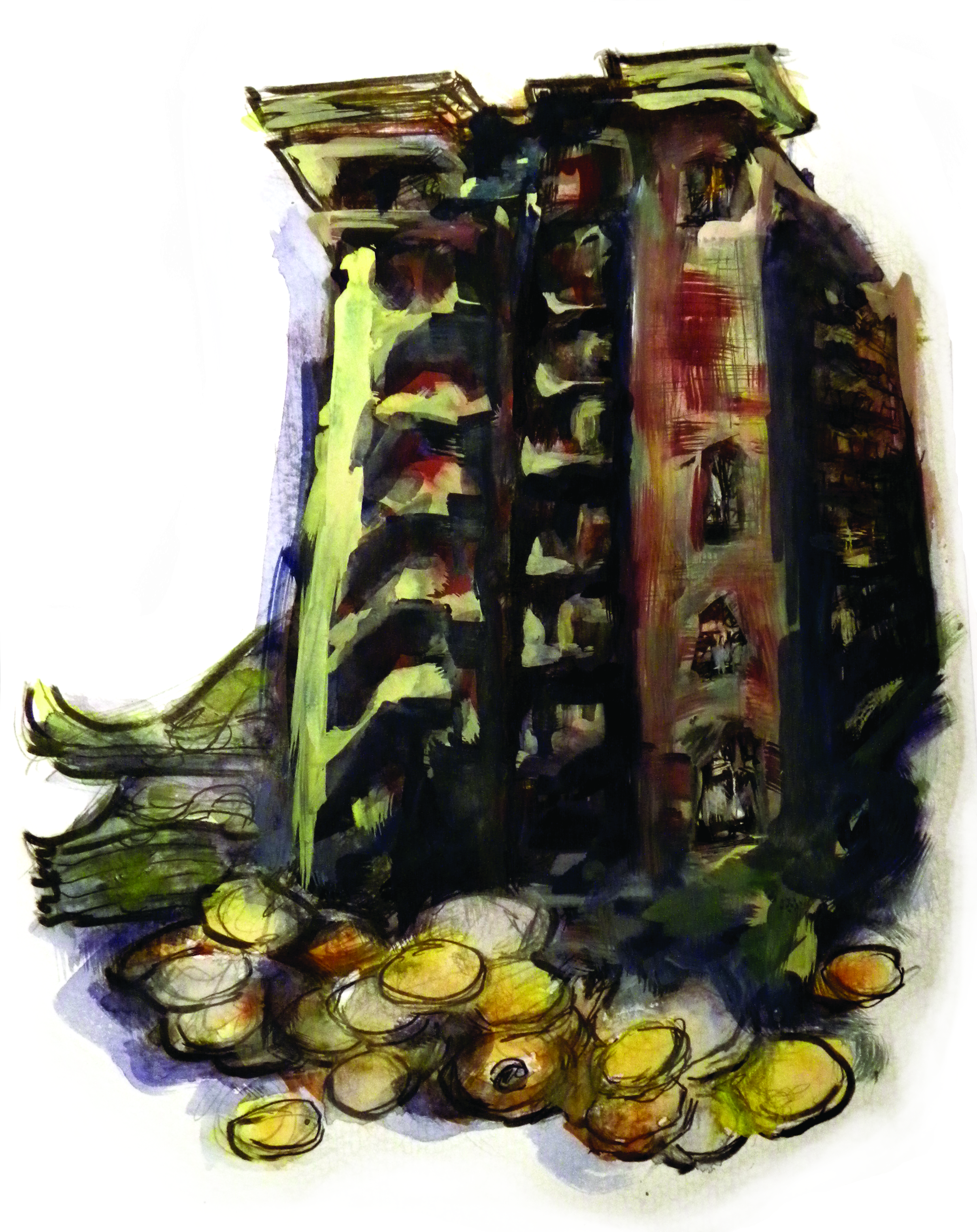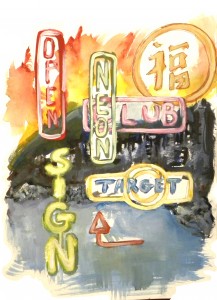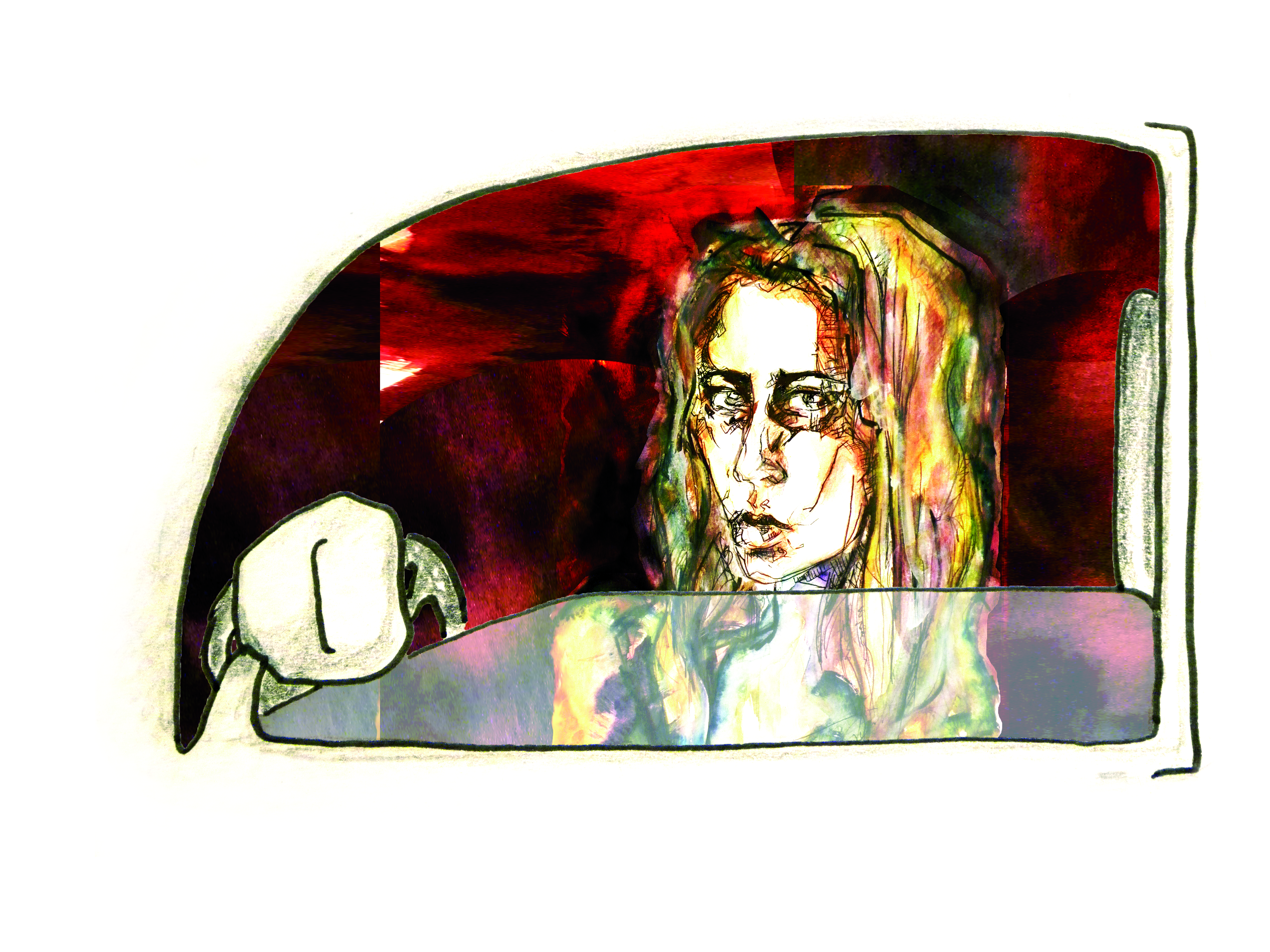“Life in Shangri-La is characterized by the interaction between European and Asian cultures, with the Europeans playing the paternal role. As with the social elites of Vancouver and Victoria during the early decades of the 20th century, the leaders of Shangri-La look to distant imperial centres for their aesthetic ideals … Even the bohemian tradition of the West Coast finds a parallel in the titillating implication of free love that apparently marks human relations in Shangri-La” – Rhetorics of Utopia: Early Modernism and the Canadian West Coast, Grant Arnold (2000)
Grocers in Chinatown, SROs and saunas on Hastings, The Planetarium, New Town Bakery, The Sun Tower, The Tomahawk, University Endowment Lands, Wreck Beach, boutiques on 4th Avenue, Little Flower Academy, beach-side parties on Locarno, Holt Renfrew and The Bay: this is a sample geography of Fraser Nixon’s Straight to the Head. Between Bauhaus and Blondie, Ronald Reagan and Vander Zalm, Italian-Chinese Strathcona and Ultra-English Shaughnessy, Straight to the Head charts a course through 1983 in the Terminal City. The novel is Nixon’s second. Described as a neo-noir genre blender, Straight to the Head is equally qualified as a document and mythology of Vancouver’s bleary, out-of-focus past, when the city was a lazy port-town on the Pacific Rim, and not an entrepot of international finance.
Nixon’s retrospect speaks to a love for the bygone Vancouver. It spills out from the beginning of the novel down side-streets, awry scents and sights. Proceeding chapter by chapter, Nixon gives near-equal share of the fiction to three protagonists, each a pivot on which the cultural and political dynamics of British Columbia roil. They’re brought into the fold by the disappearance of Irina Lermontov – described at various times as dark, dangerous, and Soviet – who absconds with $300,000 and a shipment of cocaine.

We’re first introduced to Dorothy Kwan, Irina’s landlord, the Westernized Canton-Canadian that vacillates between Chinese girl-next-door and something else entirely. Ted Windsor, the husband Irina left behind, is the Canadian Classic, dirty blond, sinewy, and cosmopolitan – a colonial anachronism and well-bred beauty. “My family’s English,” he remarks late into the novel. “You want to know how English? My grandfather refused to eat pineapple because the Hawaiians murdered Captain Cook.” The final protagonist is Renard, an American bounty-hunter, well-traveled, who calls the cops cochons, and whose benefactor has brought him in to sort out the mess. Each character according to their links to Irina, is pursued, or pursue the crooked cops chasing after the missing payload. Their favourite name for Renard? Tourist.
Though three-dimensional, Nixon’s players are not notable for their character appeal. What’s interesting is their cipher quality, the way they interface with the world around them; the way they look and are looked at in turn. Nixon, who has an eye for socio-political codes, quotes Yves Saint Laurent for his epigraph, and brings characters into sharp relief with Chanel handbags, plainclothes officers in London Fog trenches, and white-bread playboys in Lacoste. In one longer excursion into fashion, Dorothy and her idle-rich friend rifle through pictures of Vivienne Westwood’s Savage, awed. Always, Vancouverites look elsewhere, often to London where our counterculture learns to be punk and new wave; the conflux of metropolitan influences, cultural diaspora, and quaint Canadian urbanity are represented in beautiful detail, one of the book’s greatest pleasures.

If my reliance on lists in the past few paragraphs is tiring, then it’s perhaps that the novel’s pace slouches in its lethargic, list-like quality. At times the book has the affect of a Douglas Coupland travelogue, a series of witticisms and geographical remark. Nixon’s writing is considered, allowing for the flowery sign-off and wayside commentary. It’s not loquacious, but fattier than it ought to be. At times the hard-boiled edge, or jabs at various Vancouver subcultures, lean into the hyperbolic. But Nixon gives himself time to take care of surroundings, and keeps the prose and narrative lean enough.
Of course, the circularity of noir, where everyone misdirects, is a genre convention. But Straight to the Head does not pretend to have a deep mystery at its core, and may annoy readers uninterested in benders at The Empress, high-end sushi, fervour about The World’s Fair, or any of the vignettes which are ultimately the novel doing its best work.
That is the irony of the book’s title. Rather than a bullet, Straight to the Head is a title suggesting the severity of the shift from 20th Century Vancouver in a globalizing world. It’s also wordplay that could just as much reference the diversion of beers and blunts scattered throughout the book, which features multiple revelations conjured by puffs of weed. If there’s a poetry to the novel’s construction, it is the pot-laced ambivalence of the movement in Lotusland, with danger always on the periphery, before it shocks. In this sense, Nixon is adept at tone and reader expectations.
So as a genre blender, Straight to the Head peaks as a non-sentimental paean for a disappearing Vancouver, and may one day stand next to other realizations of the city’s 20th Century mythology, such as the classic student-film, The Bitter Ash. The novel is loaded with lived-in details, from the difficulty of and transporting handguns in Canada – an interesting problem for a crime novel – to the gentrification of Gastown. It’s not just a bohemian excursion either. Suffice to say, without spoiling the novel, in the spirit of muckraking noir, Nixon is aware that the small-time designs of crime will always be secondary to the real tools of power. There’s a possible complaint that the powerplay of the central characters, according to their ethnicity, class, and identity, adhere too much to a simplified explanation of Vancouver’s current cultural climate. But as a tale, Straight to the Head nails the city’s anxieties. Nixon knows his slice of time and place, how to deliver it, and what it means. Straight to the Head is pointed and political like the best noir – a shot through the Cascadian shroud of haze.
X
Straight to the Head by Fraser Nixon is published by Arsenal Pulp Press, and is set to be released this month.


